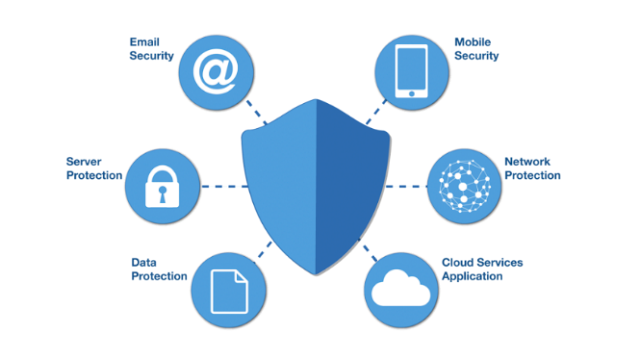Cloud security, additionally called cloud computing security, is a set of safety features designed to defend cloud-primarily based totally infrastructure, applications, and records. These measures make certain consumer and tool authentication, records and aid get entry to control, and records private protection.
The 3 major forms of cloud deployment fashions are private, public, or hybrid.
What are the top security threats?
First, we need to understand the difference between information security and cybersecurity, and the types of threats we face almost every day. Both the information security threats that exist today and the emerging threats that will surely plague organizations tomorrow.
Malware
The most common cyber attack is malicious software, better known as malware. Malware includes spyware, ransomware, backdoors, Trojan horses, viruses, and worms.
spyware is software that allows an attacker to obtain information about a user's computer her activities by covertly transferring data from the user's hard drive.
ransomware is designed to encrypt files on your device and render all files (and the system based on them) unusable. Malicious attackers usually demand a ransom in exchange for decryption. The
backdoor bypasses normal authentication procedures to gain access to systems. This allows attackers to remotely access resources within your application, Databases and file servers. It also allows malicious actors to issue system commands and update malware remotely.
Trojan is malware or code that acts as a legitimate application or file to trick users into loading and running malware on their device. The purpose of a Trojan horse is to destroy or steal an organization's data or damage a network.
A computer virus is malicious computer code designed to spread from device to device. These self-cloning threats are usually aimed at damaging your computer or stealing your data. The
worm is malware that spreads copies of itself from computer to computer without human intervention and does not need software attached to his program to cause damage.
Malware is usually installed on a system when a user opens a malicious link or email. Once installed, the malware can block access to critical components of your network, damage your system and export sensitive information to unknown destinations.
- Prevent malware-based cyber-attacks with proven antivirus and antimalware solutions, email spam filters, and endpoint security solutions.
- Make sure you have all the latest cybersecurity updates and patches.
- Require employees to complete regular cybersecurity awareness training sessions to teach employees how to avoid suspicious websites and not engage in suspicious emails.
- Restrict user access and application privileges.
Phishing and Spear Phishing
phishing is a form of social engineering that attempts to trick users into revealing sensitive information such as usernames and passwords, bank account information, social security numbers, credit card details, and more.
Hackers typically send phishing emails that appear to come from trusted senders such as PayPal, eBay, financial institutions, or friends and colleagues. Fake messages try to trick users into clicking links in emails. This redirects users to fake girlfriend websites that ask for personal information or install malware on the device.
Opening attachments sent in phishing emails can also install malware or allow hackers to remotely control your device.
Spear phishing is a more sophisticated phishing attack in which cyber criminals target only privileged users such as system administrators and executives. Attackers can use someone's social media account details to appear more legitimate to their targets.
Other types of phishing include smishing, vishing, clone phishing, domain spoofing, URL phishing, watering hole phishing, and evil twin phishing. Everything can get very expensive.
Organizations can take several steps to reduce the likelihood of phishing.
- Emphasizes the importance of phishing reports.
- Run a random phishing simulation.
- Website pushes HTTPS for a secure and encrypted connection.
- Institutional Access Control Policies and Procedures.
- Use reliable email and spam filters.
- Two-factor authentication required.
- Use email encryption and email signing certificates.
Man-in-the-Middle (MITM) Attacks
These attacks occur when a malicious actor gets in the middle of her two-way communication. Once an attacker intercepts incoming messages, they can hack your system.
Distributed Denial of Service (DDoS)
DDoS attacks aim to bring down a company's website by flooding the server with requests. It's like constantly calling your company phone number. Therefore, legitimate callers only get a busy signal and never get connected.
This attack sends requests from hundreds or thousands of IP addresses. These IP addresses may also have been compromised and tricked into continuously requesting your company's website.
A DDoS attack can overload a server, slow it down significantly, or take it temporarily offline. These shutdowns will prevent customers from visiting her website to complete orders.
Structured Query Language (SQL) Injection
A SQL injection attack occurs when a cybercriminal uploads a malicious SQL script to try to access a database. If successful, malicious actors can view, modify, or delete data stored in the SQL database.
Domain Name System (DNS) Attacks
DNS attacks are cyberattacks in which cybercriminals exploit vulnerabilities in DNS. Attackers exploit her DNS vulnerabilities to redirect website visitors to malicious sites (DNS hijacking) and exfiltrate data from compromised systems (DNS tunneling).







No comments:
Post a Comment